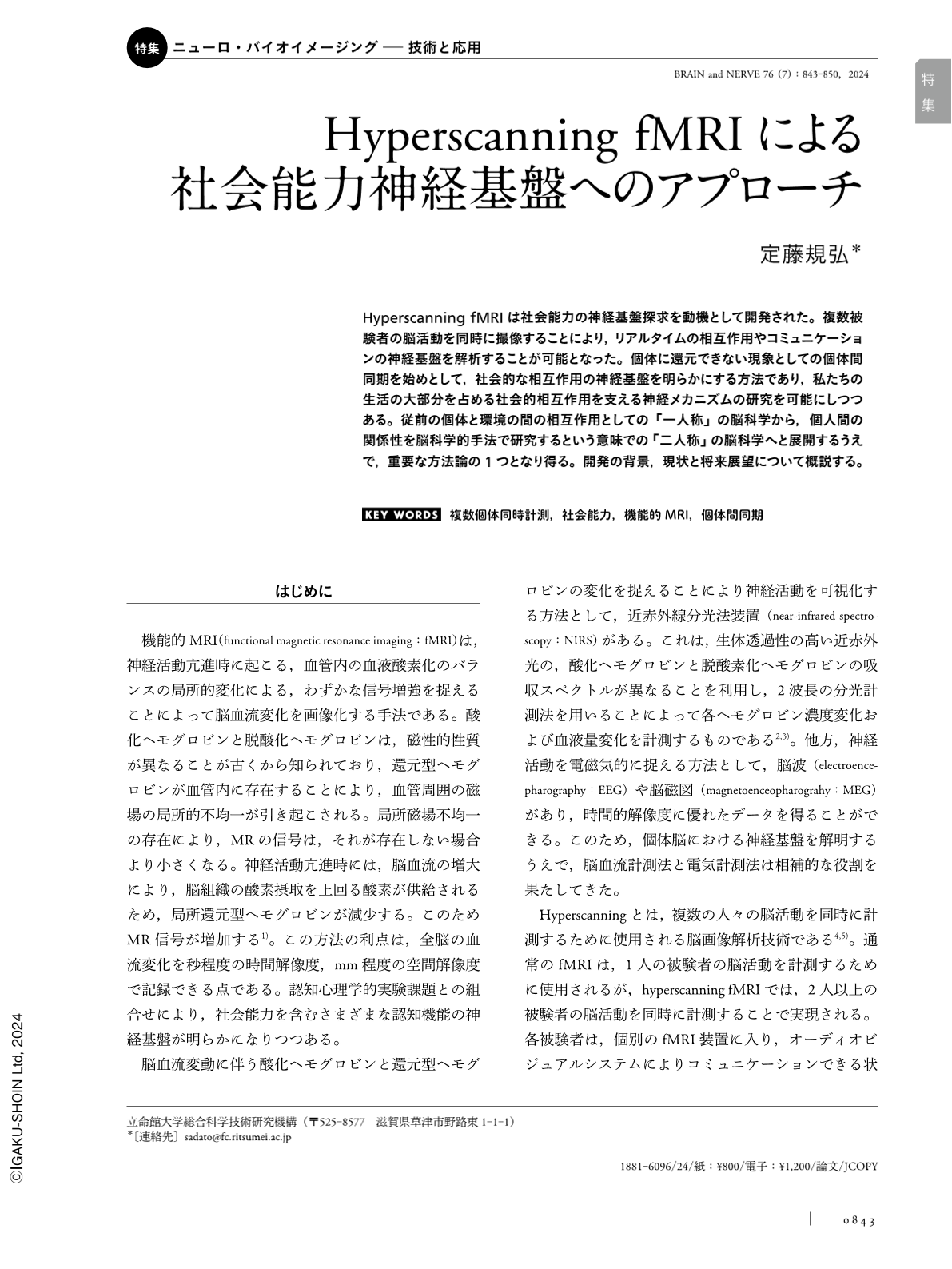Japanese
English
- 有料閲覧
- Abstract 文献概要
- 1ページ目 Look Inside
- 参考文献 Reference
Hyperscanning fMRIは社会能力の神経基盤探求を動機として開発された。複数被験者の脳活動を同時に撮像することにより,リアルタイムの相互作用やコミュニケーションの神経基盤を解析することが可能となった。個体に還元できない現象としての個体間同期を始めとして,社会的な相互作用の神経基盤を明らかにする方法であり,私たちの生活の大部分を占める社会的相互作用を支える神経メカニズムの研究を可能にしつつある。従前の個体と環境の間の相互作用としての「一人称」の脳科学から,個人間の関係性を脳科学的手法で研究するという意味での「二人称」の脳科学へと展開するうえで,重要な方法論の1つとなり得る。開発の背景,現状と将来展望について概説する。
Abstract
Hyperscanning functional magnetic resonance imaging (fMRI) was developed to gain deeper insight into the neural basis of social cognition. Simultaneous imaging of brain activity in multiple subjects facilitates analysis of the neural basis of real-time interactions and communication. This method reveals the neural basis of social interactions, including inter-individual synchronization as a phenomenon that cannot be reduced to individuals. This modality enables research into the neural mechanisms underlying social interactions that are integral to many aspects of our lives. I will outline the background, current status, and prospects of development of hyperscanning fMRI, which may be an important methodology in the shift from “first-person” neuroscience (which refers to the interaction between individuals and the environment) to “second-person” neuroscience (which refers to the application of neuroscientific methods to investigate inter-individual associations).

Copyright © 2024, Igaku-Shoin Ltd. All rights reserved.


